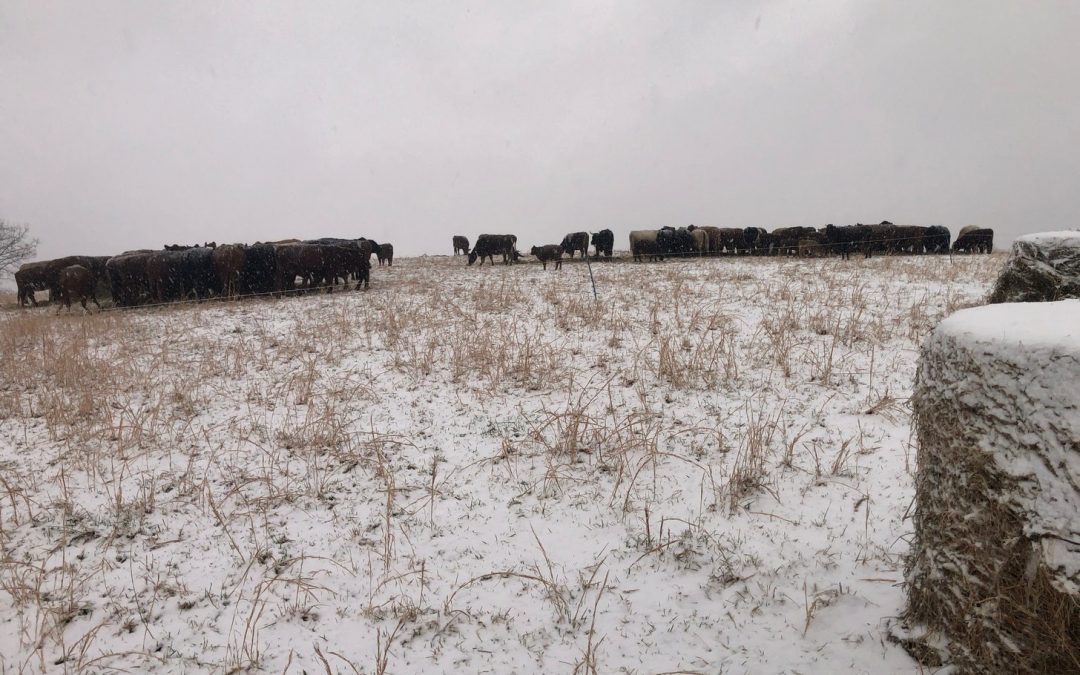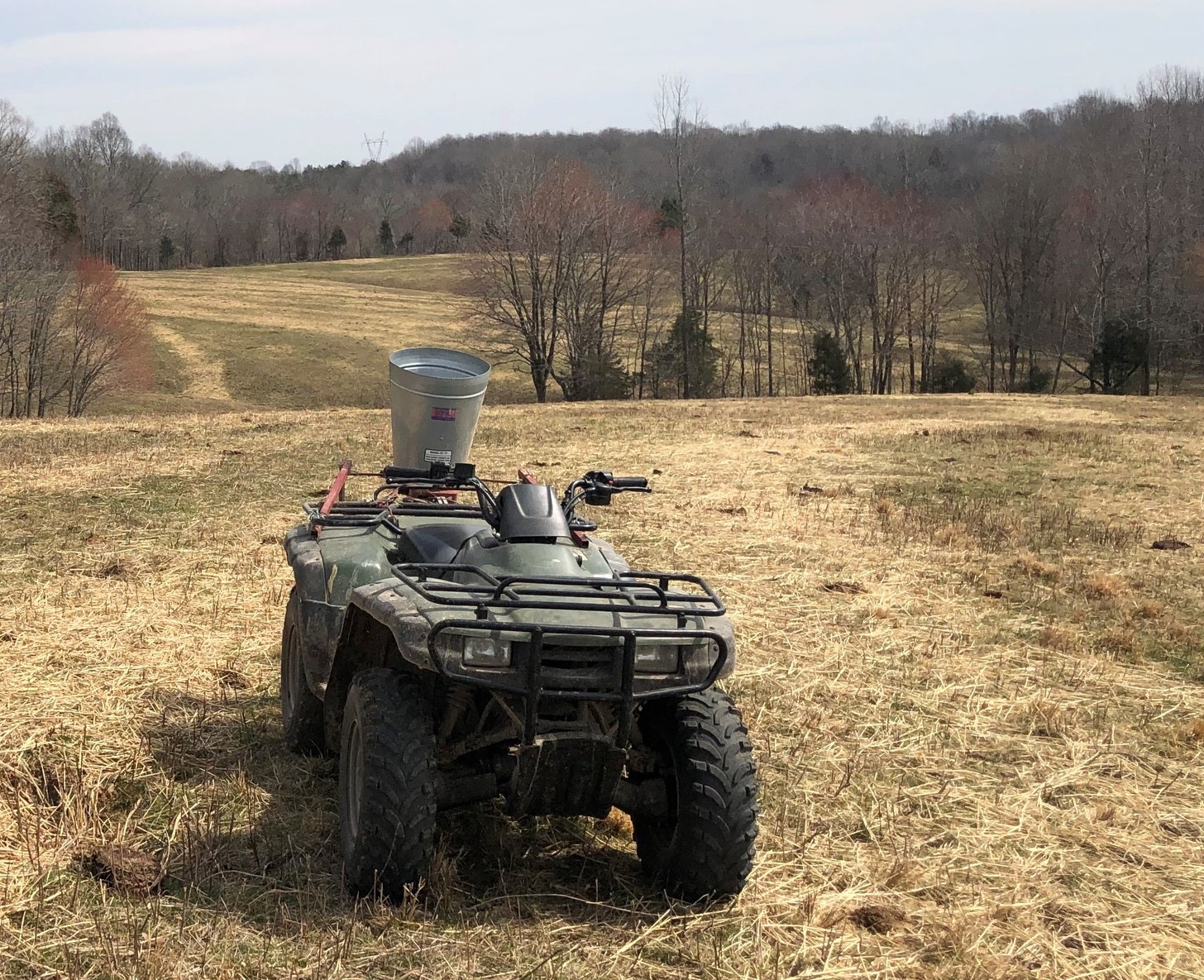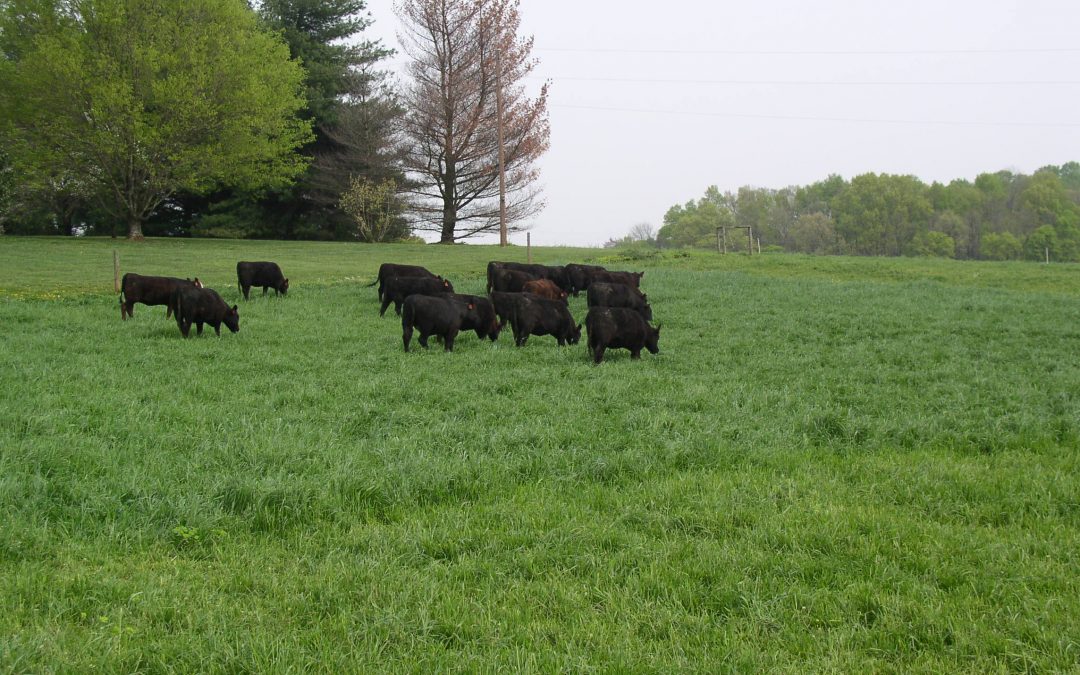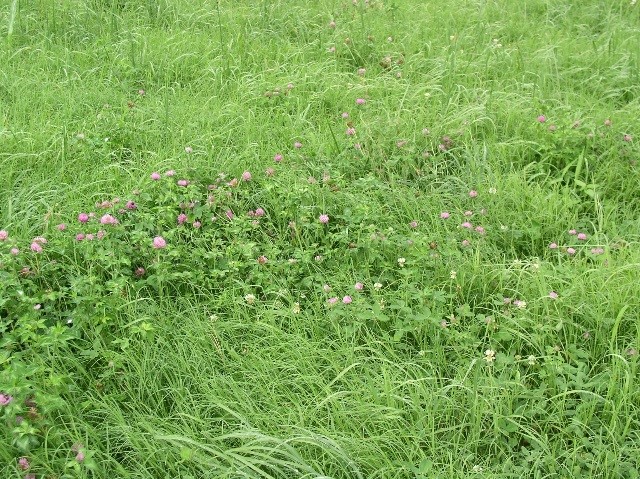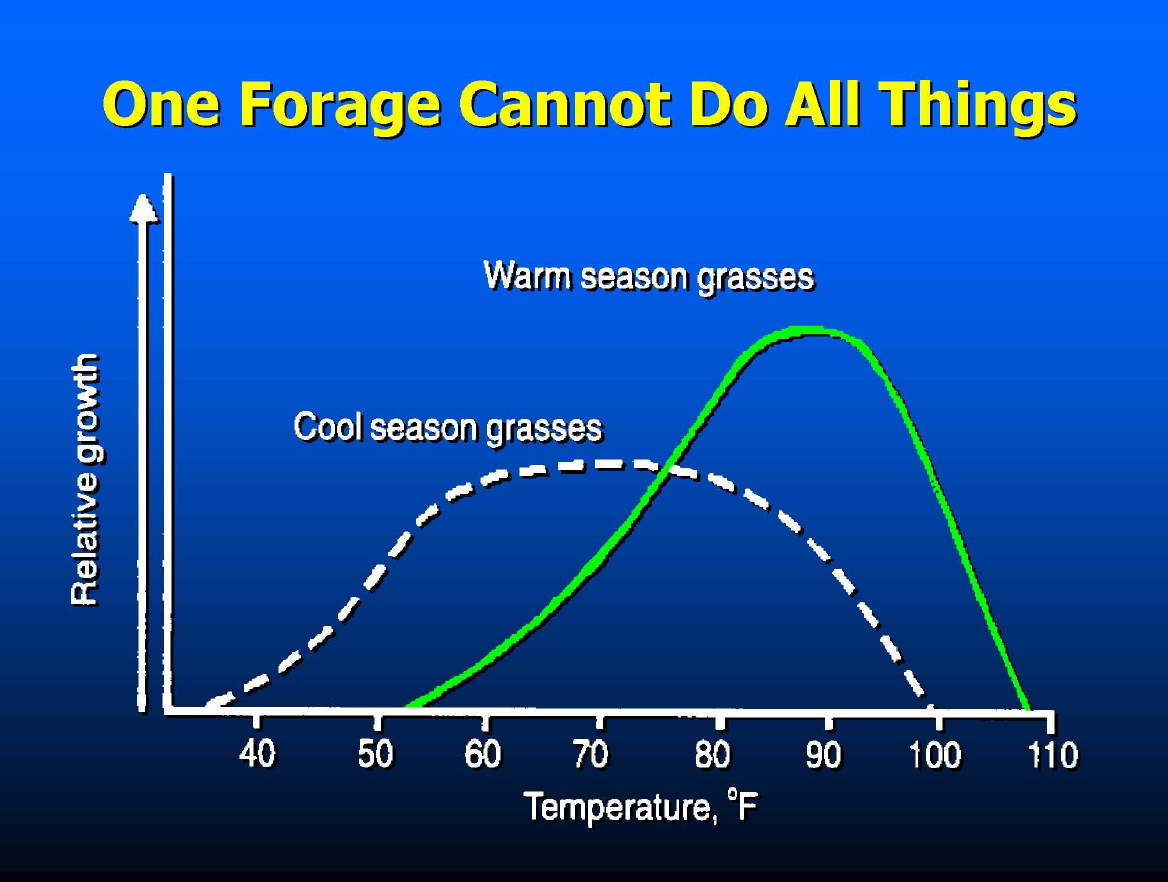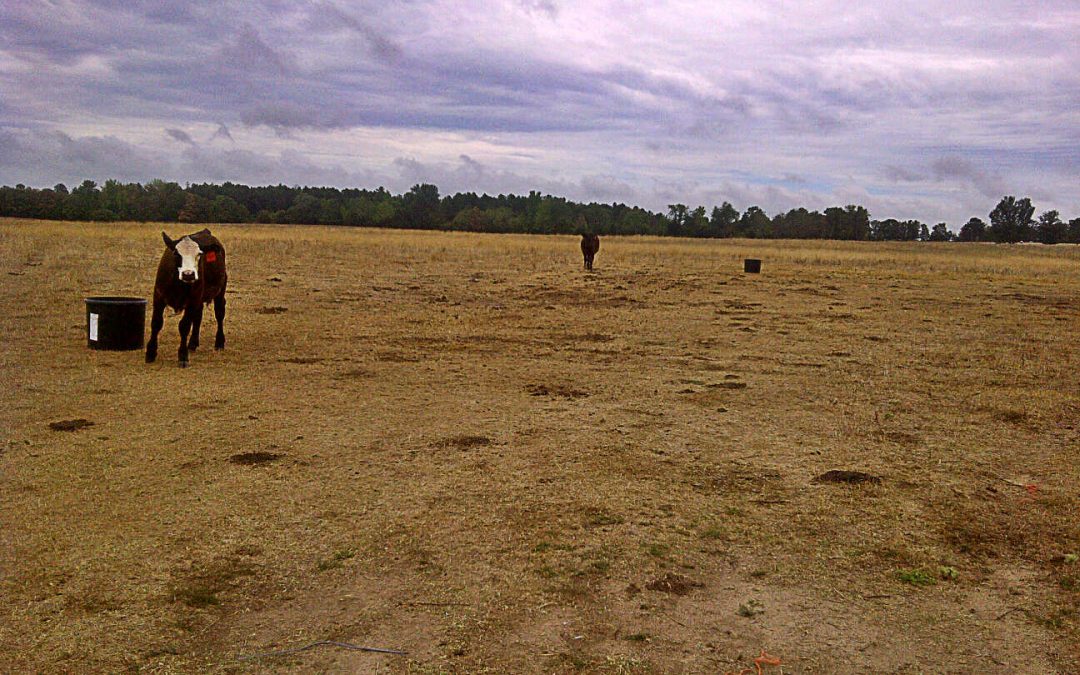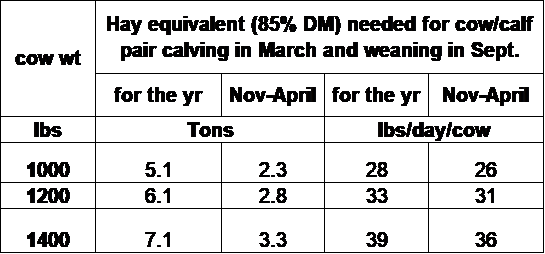We are at the change of seasons. A time to contemplate and plan for summer forage. Note in the graph above, as temperatures hit 80 degrees F. or higher cool season forage production decreases and warm seasons forages kick in high gear. I encourage you to make warm season and drought management decisions prior to the end of the recommended seeding date for warm season forages, July 1.
Options:
- Stockpile cool season forage into summer
- Graze a field hard to release the seed bank for natural regeneration
- Seed summer annuals
- Seed summer perennials
- Fertilization to improve warm season production
Stockpile cool season forage into summer.
Although I think it is wise to carry some cool season growth into summer, the quality of it will be dependent on temperature and rainfall. It may hold all summer but if it gets hot and dry it will just be some carbon to lay down and forage quality will be very poor. Red clover and annual lespedeza will extend growth into summer.
Graze a field hard to release the seed bank for natural regeneration
It’s a lot like rolling the dice. Unless you know the field well you may release some warm season species you don’t want. This technique works extremely well for release of bermudagrass, crabgrass and dallisgrass. Other plants that are also likely to grow white clover (if it is cool and moist), ragweed, lambsquarter (both test like alfalfa but stock don’t always consume them), spiny amaranth (weed due to spines other amaranths are palatable and high quality), cocklebur (bad weed, big canopy, sometimes consumed), nimblewill (terrible grass weed that looks like bermudagrass, not readily grazed). Grazing 20% of the pastures low May –June is a decent strategy.
Seed summer annuals.
Crabgrass, cowpeas and lablab are the only species that UT recommend planting as late as July 1. Forage & Field Crop Seeding Guide For Tennessee
Crabgrass Improved Variety Options Crabgrass improved variety options:
Quick and Big and Red River.
Quick and Big is fast growth and Red River has a longer growing season. You may want to seed a blend of the two, sometimes folks add annual lespedeza to the mix.
The seeding rate of crabgrass is 3 to 5 lb/ac. If you add annual lespedeza 8 to 10 lb/ac. Crabgrass is a reseeding annual that responds to disturbance at least once a year. Cowpeas, high quality drought tolerant legume which makes a good smother crop if you have an undesirable weed you are trying to control. Even though it is a little late for millet you may want to add 10-20 lb/ac. of pearl or browntop millet with the cowpeas. Lablab is typically grown for wildlife food plots but is good forage for ruminants too best used in a mix.
Seed summer perennials
Bermudagrass is the only plant UT recommends planting as late as July 1. I usually just recommend bermudagrass on areas that are planned for heavy use areas or where nutrients are going to be high. Bermudagrass has some issues, stem maggot (it kills the primary stem tip reducing production) which most spray an insecticide for control, grazing could be used to reduce impacts also bermudagrass does best where nutrients are high. There are several improved bermudagrass varieties: Cheyenne II (highest producing seeded type); Laredo (Allied seed variety, blend of Mohawk , KF-194, & Rancher; Wrangler (most cold tolerant). You can also establish bermudagrass with clippings using Vaughn’s No. 1 which is typically thought of as the Cadillac of bermudagrasses for our area. Bermudagrass can produce high tonnage, be used hard and overseeded with clovers and winter annuals the second year after establishment.
Another warm season grass option although it is too late to seed now is native warm season grass (NWSG) it’s best sown when seed are exposed to a couple of cold chills (vernalization). Now is the time to start planning for it. I like NWSG sown on lower fertility soils so weed competition is less. On low production you are not giving up much production while the natives are establishing for a couple of years. Usually herbicides are used to establish NWSG however an option to establish it without herbicides would be to terminate existing vegetation with tillage plant a summer annual leaving most of the biomass on the soil surface then no-tilling in cereal rye. Dormant planting NWSG in December – April into cereal rye. Rolling down the cereal rye in early April for weed control. Natives will emerge through the residue in the spring.
Fertilization to improve warm season production
Applying nutrients to grass May – July increases warm season production. Nitrogen has the biggest impact on forage production, nitrogen also increases protein content in the grass. Typically no more than 60 lb of nitrogen is recommended in one application and typically applications should be scheduled 30 or more days apart. I personally don’t like over 45 lb of nitrogen in one application because if it turns off dry, high rates of nitrogen can cause forage to accumulate nitrates.
